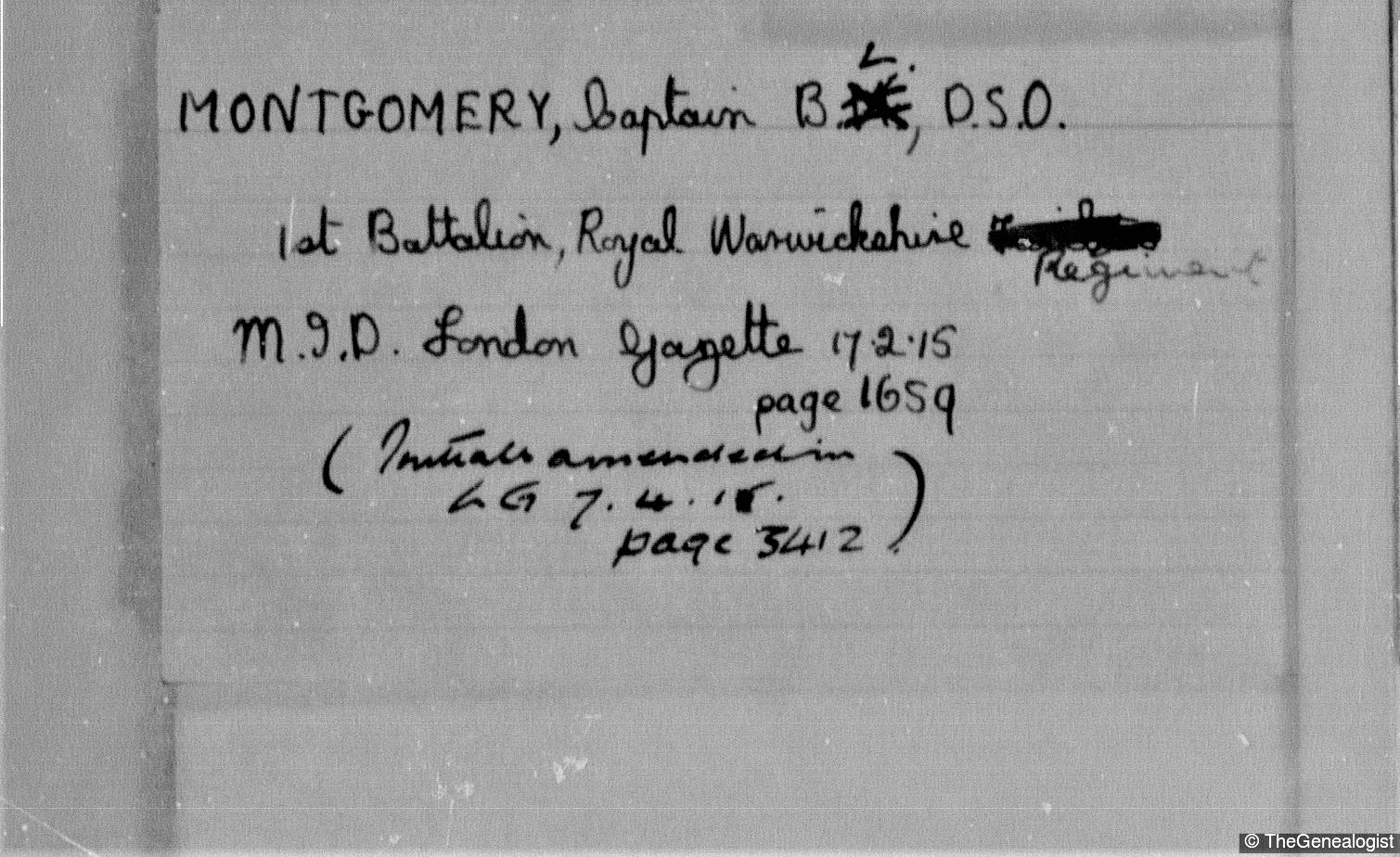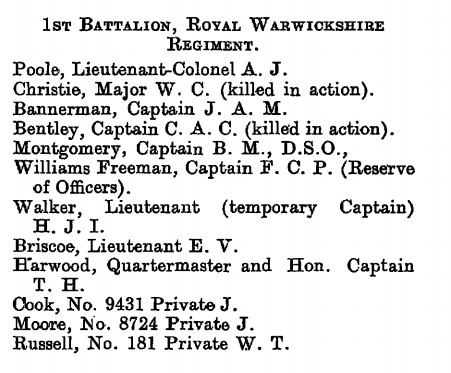What does Mentioned in Despatches mean?
Family history researcher Nick Thorne explores this award for bravery, focusing on Field Marshal Montgomery’s MiD.
The term Mentioned in Despatches (MiD) may crop up when you’re investigating an ancestor’s military life. What it means is that your armed forces forebear did something that had warranted their name to be included in an official account written by a superior officer, which had then been sent on to the War Office.
The report would have described the gallant or meritorious action that the subject had taken in the face of the enemy. The mention will have been published in The Gazette and usually the person’s name, rank, number and regiment/unit would be included – but not why they had been recognised.
Some personnel were not in line to receive a medal for their action, but nevertheless, they will be listed in the records, as being MiD entitled them to receive a certificate and wear the oak leaf decoration on their dress uniform. Only one such decoration is ever worn, even when a soldier is mentioned more than once. This was the case in the example of Captain B.L. Montgomery, who was MiD several times.
Bernard Law Montgomery served in World War 1 in the Royal Warwickshire Regiment and was first MiD in 1915. Later awarded many medals, including the DSO to which his oak leaf is pinned (Gazette issue 28992), Montgomery served between 1915 and 1918, ending WW1 as a lieutenant colonel. He was to go on to become Field Marshal Montgomery and 1st Viscount Montgomery of Alamein.
The handwritten MiD card records can reveal detail such as the military clerk’s corrections and messy amendments. You can see this on Montgomery’s 1915 MiD card, alongside the published version in The London Gazette (issue 29072, page 1659):
 |
 |
Researching Montgomery’s military life further finds him in the casualty lists as a junior officer when in 1914, a sniper shot him through the right lung while he was serving near to the border of France and Belgium. He was shot through the knee on another occasion and was awarded the DSO for his gallant leadership when he turned the enemy out of their trenches with a bayonet (citation in Gazette issue 28992).
Once Captain Montgomery had recovered from his wounds, he went back to the Western Front in 1916 as a general staff officer and took part in the Battle of Arras (Spring 1917) and also the Battle of Passchendaele (Autumn 1917). At the end of the war he become chief of staff of the 47th (2nd London) Division.
In World War 2, ‘Monty’ assumed command of the Eighth Army in the Western Desert facing Romeril's forces in Africa. The Battle of El Alamein was a turning point of the Western Desert Campaign (despatch Gazette issue 38196) and he went on to command the Eighth Army when it was part of the Allied invasion of Sicily and Italy. During Operation Overlord (despatch Gazette issue 38111), Montgomery was in charge of all Allied ground forces and on 4 May 1945 it was he who took the German surrender at Lüneburg Heath, North Germany.
With the war over, Field Marshal Montgomery became commander-in-chief of the British Army of the Rhine, rising to be chief of the Imperial General Staff. In 1948 he became chairman of the permanent defence organisation of the Western European Union and in 1951, deputy commander of the Supreme Headquarters of NATO.
Reputedly lacking in tact, he upset US generals Paton and Bradley during WW2 and after the hostilities, he criticised many of his wartime colleagues, including General Eisenhower who was, by then, President of the United States. It is safe to say that Monty was a complex but brave man who served in the British Army for 50 years. He died on 24 March 1976.
About the author
Nick Thorne writes for genealogy research website TheGenealogist.co.uk, which amongst its large military collection has over 81,000 Mentioned in Despatches records from WW1, with images of handwritten record cards linked to citations in The London Gazette.
Image: MiD card images in military records, © TheGenealogist.co.uk
